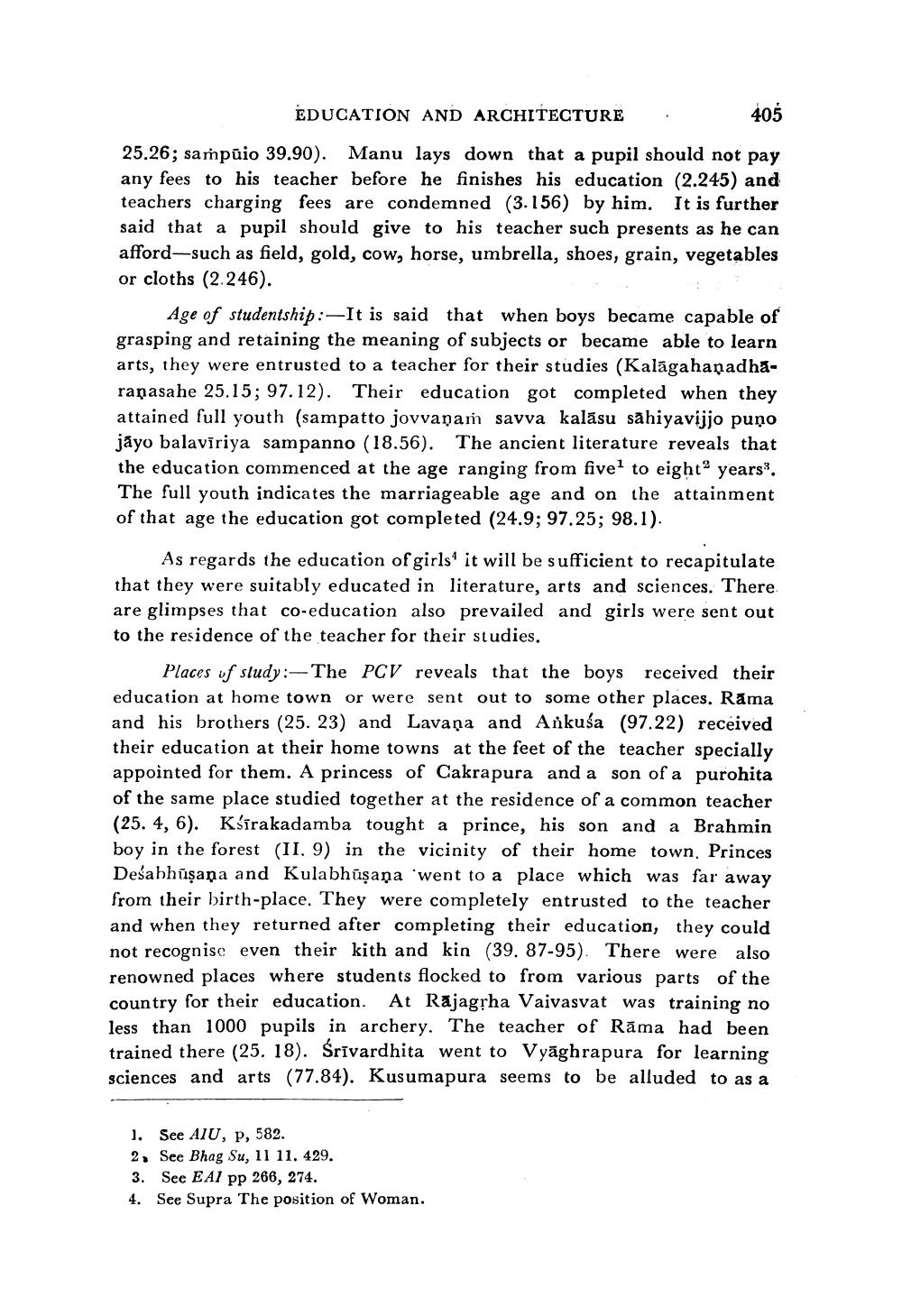________________
EDUCATION AND ARCHITECTURE
405
25.26; sampūio 39.90). Manu lays down that a pupil should not pay any fees to his teacher before he finishes his education (2.245) and teachers charging fees are condemned (3.156) by him. It is further said that a pupil should give to his teacher such presents as he can afford-such as field, gold, cow, horse, umbrella, shoes, grain, vegetables or cloths (2.246).
Age of studentship :-It is said that when boys became capable of grasping and retaining the meaning of subjects or became able to learn arts, they were entrusted to a teacher for their studies (Kalagahanadharanasahe 25.15; 97.12). Their education got completed when they attained full youth (sampatto jovvanam savva kalásu sāhiyavijjo puņo jayo balavīriya sampanno (18.56). The ancient literature reveals that the education commenced at the age ranging from five to eight years. The full youth indicates the marriageable age and on the attainment of that age the education got completed (24.9; 97.25; 98.1).
As regards the education of girls it will be sufficient to recapitulate that they were suitably educated in literature, arts and sciences. There are glimpses that co-education also prevailed and girls were sent out to the residence of the teacher for their studies.
Places of study:- The PCV reveals that the boys received their education at home town or were sent out to some other places. Rāma and his brothers (25. 23) and Lavaņa and Arkuša (97.22) received their education at their home towns at the feet of the teacher specially appointed for them. A princess of Cakrapura and a son of a purohita of the same place studied together at the residence of a common teacher (25. 4, 6). Kbirakadamba tought a prince, his son and a Brahmin boy in the forest (II. 9) in the vicinity of their home town. Princes Deśabhūşana and Kulabhūşaņa 'went to a place which was far away from their birth-place. They were completely entrusted to the teacher and when they returned after completing their education, they could not recognise even their kith and kin (39. 87-95). There were also renowned places where students flocked to from various parts of the country for their education. At Rājagļha Vaivasvat was training no less than 1000 pupils in archery. The teacher of Rāma had been trained there (25. 18). Śrīvardhita went to Vyāghrapura for learning sciences and arts (77.84). Kusumapura seems to be alluded to as a
1. See AIU, P, 582. 2, See Bhag Su, 11 11. 429. 3. See E AI pp 266, 274. 4. See Supra The position of Woman.




